The exhibition offers a comprehensive overview of Vietnamese Buddhist culture through aspects such as language, ceremonial robes, architecture, and heritage.
One exhibit showcases a replica of a Ly dynasty stupa from Phat Tich Pagoda. The original structure was built by the third king of the Ly dynasty, Ly Thanh Tong, between 1057 and 1066 at Van Phuc Pagoda on Tien Du Mountain in Bac Ninh Province. Inside the original stupa was a golden Buddha statue standing six thuoc (about 2.4 meters) tall.
This Ly dynasty stupa replica was reconstructed based on archaeological and historical records. It features a square layout with 13 tiers and a brick core adorned with decorative stonework.
The stupa's base represents Mount Sumeru. From the thousand-petal lotus pedestal rises the jeweled stupa, symbolizing the manifestation of the Buddhas. The four sides are guarded by the Eight Vajra Warriors, protectors of the Dharma. Surrounding the stupa are Kalavinka birds, singing from the Pure Land. Intricate dragon carvings and floral motifs highlight the exceptional craftsmanship of ancient artisans, reflecting a spirit of grandeur and aesthetics unique to the era.
Architect Dinh Viet Phuong, who leads the research team, said that the exhibition features 20 Buddha statue replicas, with the rest being visual displays.
The team spent two years crafting the statues, each scaled down to 50-70% of the original size.
One highlight is the replica of the Amitabha Buddha statue from Phat Tich Pagoda. The original masterpiece of Ly dynasty sculpture was designated a national treasure in 2013. Made from green stone, the statue, including its base, stands at 277 cm tall and depicts Amitabha Buddha seated in full lotus meditation on a lotus pedestal, exuding serenity and spiritual composure.
Another prominent exhibit is the replica of the Thousand-armed and Thousand-eyed Avalokiteshvara from Bao An Pagoda. The original, recognized as one of 113 of Asia’s most outstanding religious artworks, reflects Vietnam’s unique Buddhist artistry within the global tradition. It has been acknowledged as a national treasure.
Also featured is the replica of the Three Worlds Buddha statues from But Thap Pagoda (Bac Ninh). The original trio symbolizes past, present, and future Buddhas: Amitabha (past), Shakyamuni (present), and Maitreya (future). Each figure sits in meditative posture atop a lotus pedestal. The statues, dating back to the 17th century, were officially recognized as national treasures in 2020.
The exhibit includes the replica of the Thousand-armed and Thousand-eyed Avalokiteshvara statue from But Thap Pagoda, also in Bac Ninh. Created in the 17th century and designated a national treasure in 2012, the original wooden statue stands 235 cm tall and features 11 front-facing heads, two side heads, 42 large bare arms in mudra positions, and a surrounding circle of 789 smaller arms - each bearing an eye - attached separately to the rear of the sculpture.
Visitors can also view replicas of the Three Worlds Buddha statues from Linh Ung Pagoda (Bac Ninh), created in the 17th century and recognized as national treasures in 2013. These massive solid stone statues stand 1.46 meters tall (2.59 meters with the pedestal) and weigh several tons. Their unique bases feature decorative motifs influenced by the Tran, Early Le, and Mac dynasties, showcasing the idealized beauty of Buddhist art.
Another centerpiece is the replica of the Tuyet Son statue from Mia Pagoda (Hanoi). The original, sculpted in the 17th or 18th century, captures the period of asceticism undergone by Prince Siddhartha before his enlightenment.
Also on display is a replica of the Thousand-armed and Thousand-eyed Avalokiteshvara statue from Me So Pagoda (Hung Yen). Crafted in the 19th century and recognized as a national treasure in 2018, the original was made of jackfruit wood and shows the deity in a meditative posture on a lotus throne, with 1,014 eyes and arms - 42 of which are large and symmetrically arranged. Notably, an extra pair of arms is sculpted onto the statue's back.
Two additional replicas depict Avalokiteshvara bestowing children and Avalokiteshvara seated on a mountain, both from Mia Pagoda in Hanoi. These wooden statues, created in the 17th and 18th centuries, are lacquered and gilded.
Another highlight is a reconstructed statue of Phap Van Buddha from Dau Pagoda (Bac Ninh), flanked by the Kim Dong and Ngoc Nu statues. The originals date back to the 16th century and were officially declared national treasures in 2017.
The exhibit’s “Northern Buddhist Heritage” hall offers a vivid cross-section of Buddhism’s over-2,000-year integration into Vietnamese spiritual and cultural life. One standout item is a Ly dynasty terracotta stupa bearing the inscription: “Thap chu khai thien thong van Hoang de” (The tower founder, opener of the sky and destiny of the Emperor), dating from the 16th or 17th century.
Alongside the statue replicas are numerous images, documents, and descriptions highlighting the significance of Vietnam’s national Buddhist treasures.
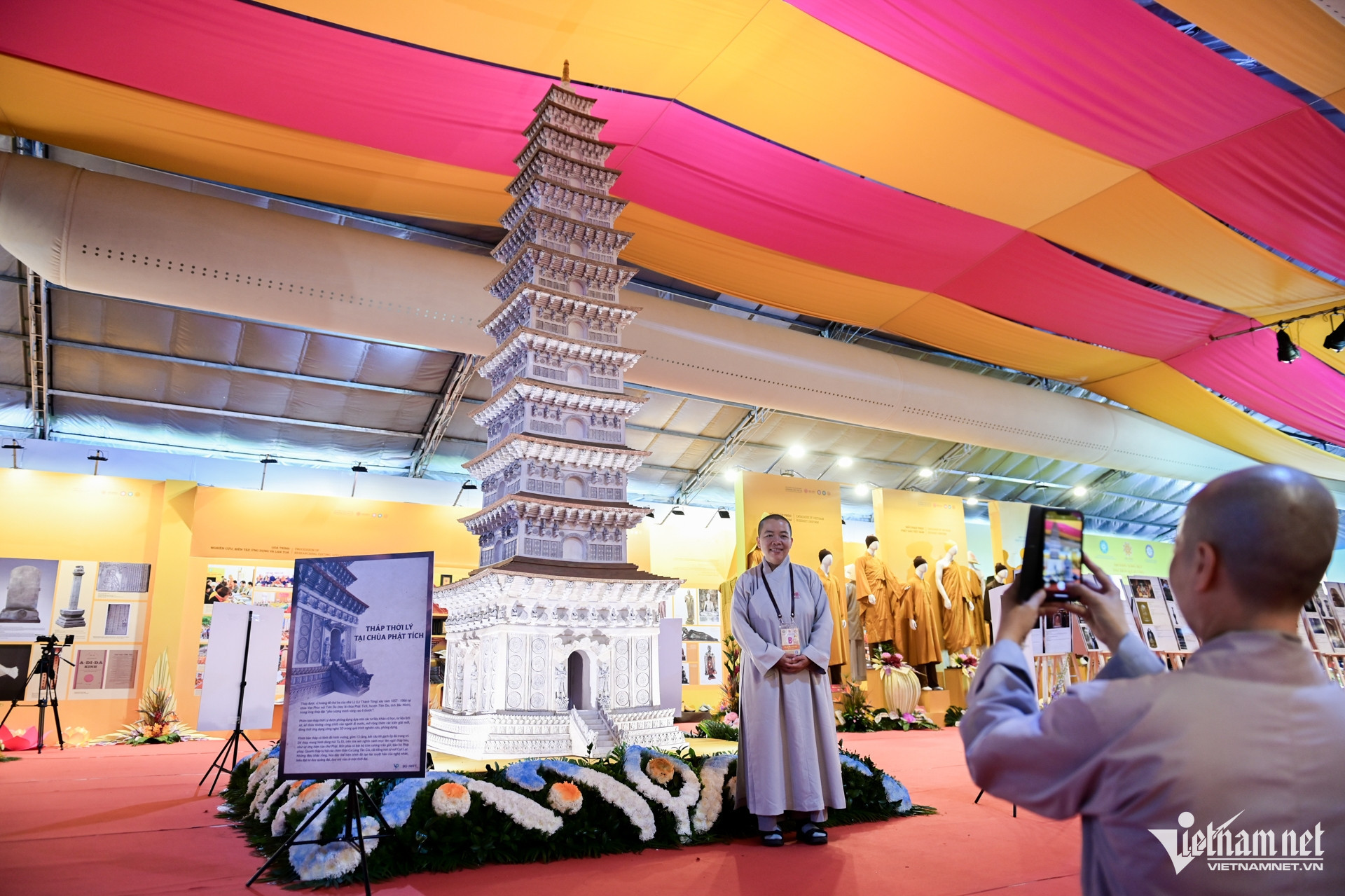
A replica of the Ly dynasty stupa at Phat Tich Pagoda.
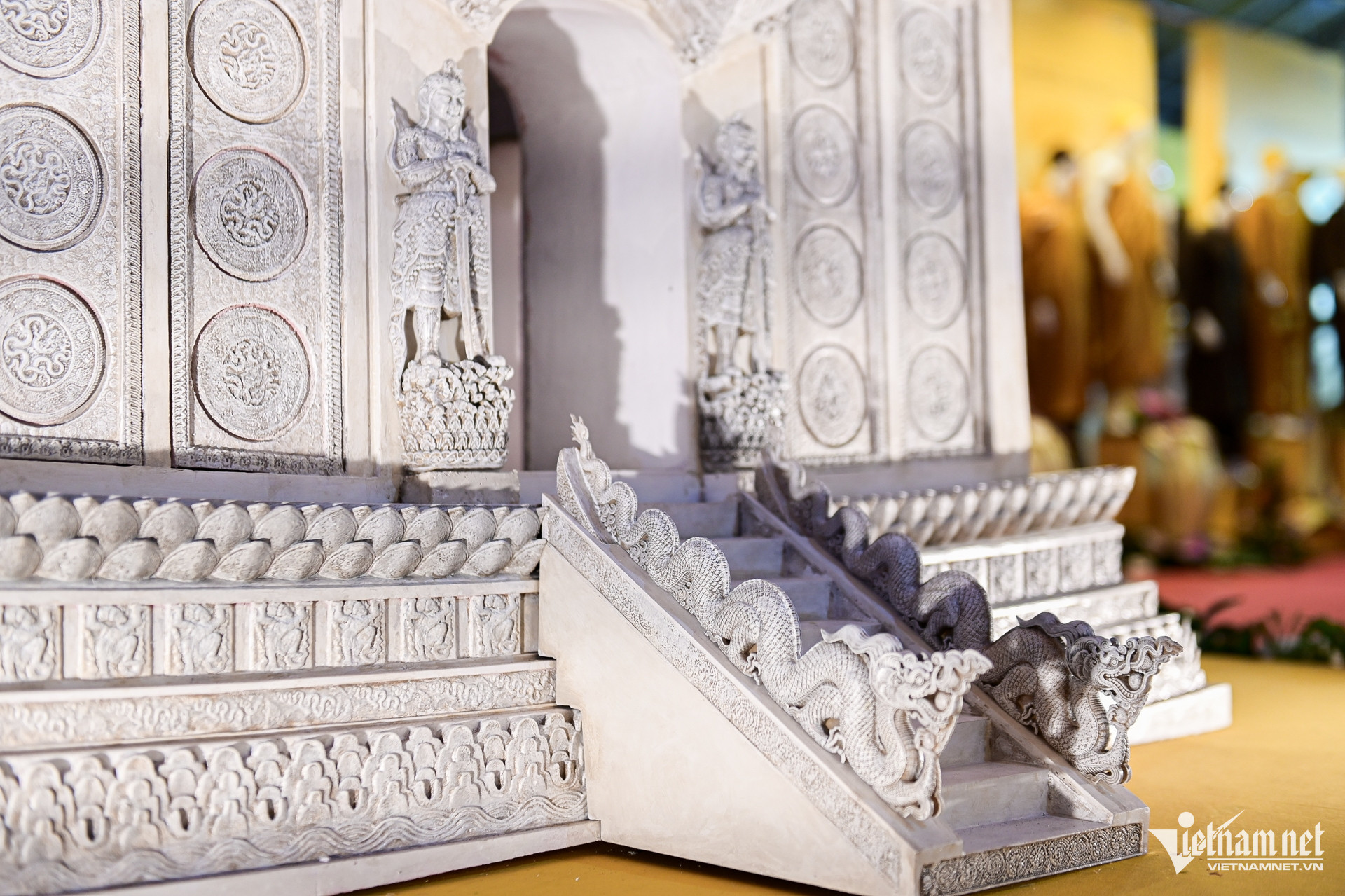

Architect Dinh Viet Phuong (pictured), head of the research team, said 20 replicas are sculptures, while the rest are visual exhibits.
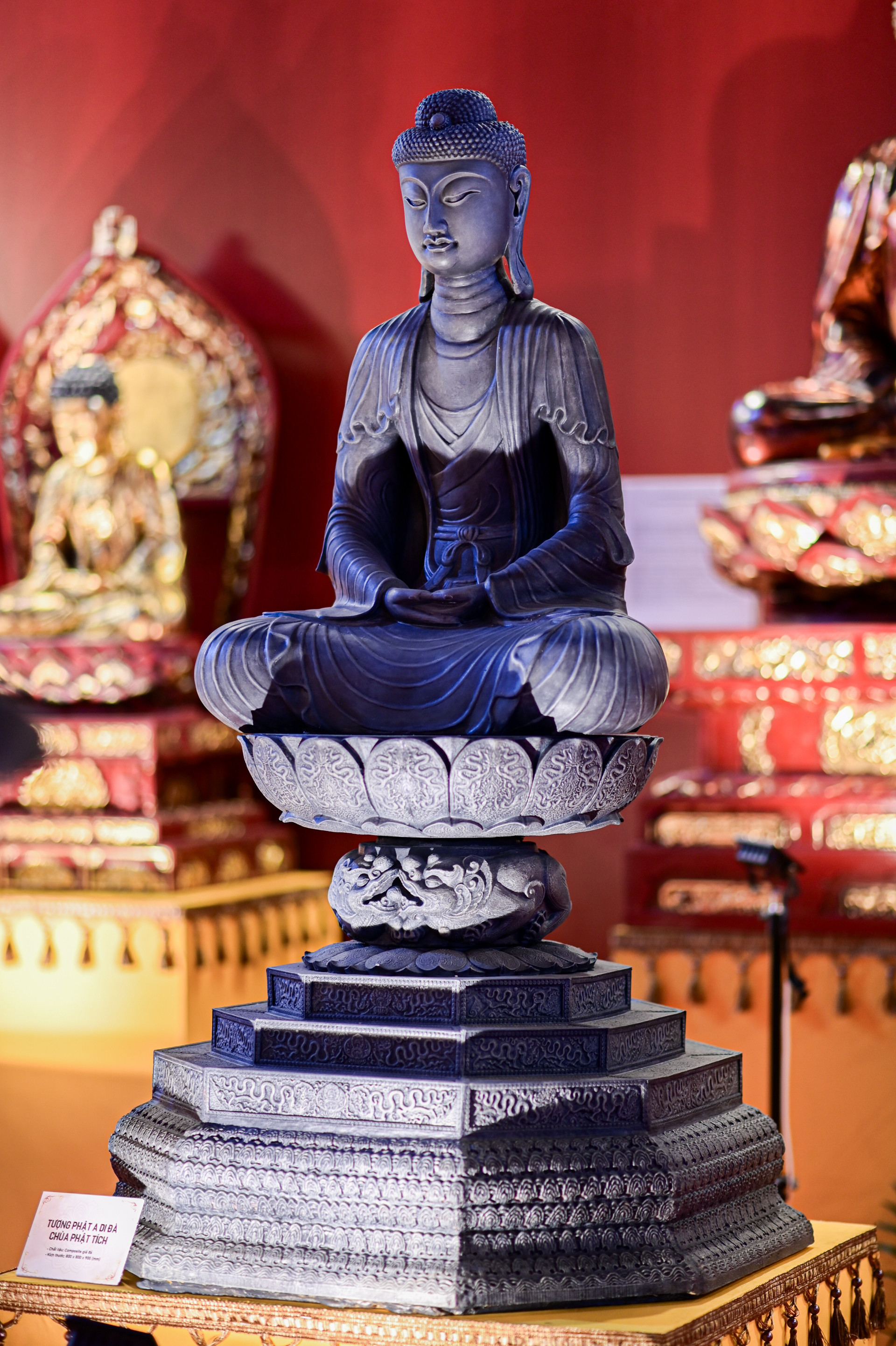
Replica of the Amitabha Buddha statue at Phat Tich Pagoda.
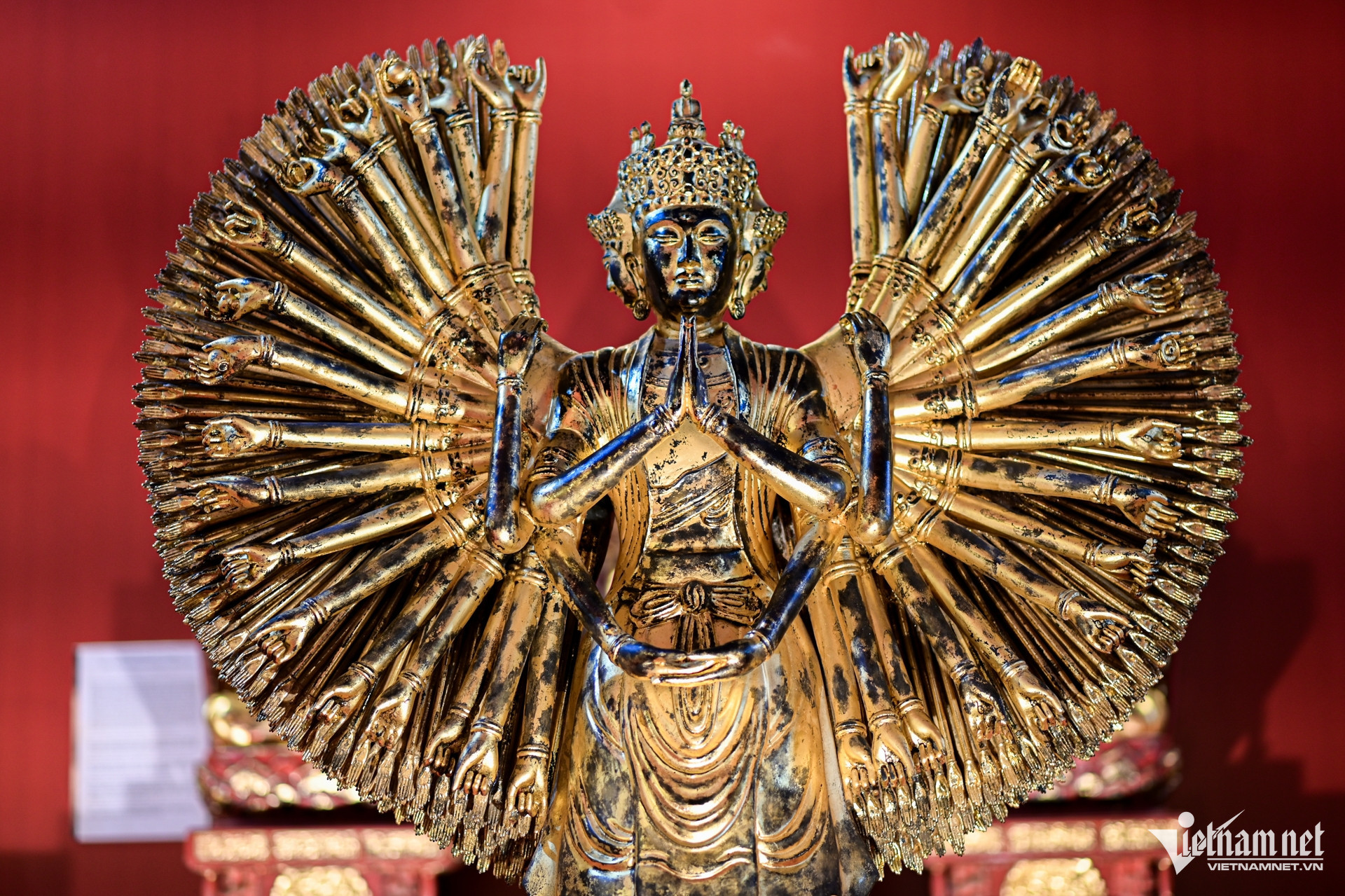
Replica of the Thousand-armed and Thousand-eyed Avalokiteshvara statue at Bao An Pagoda.
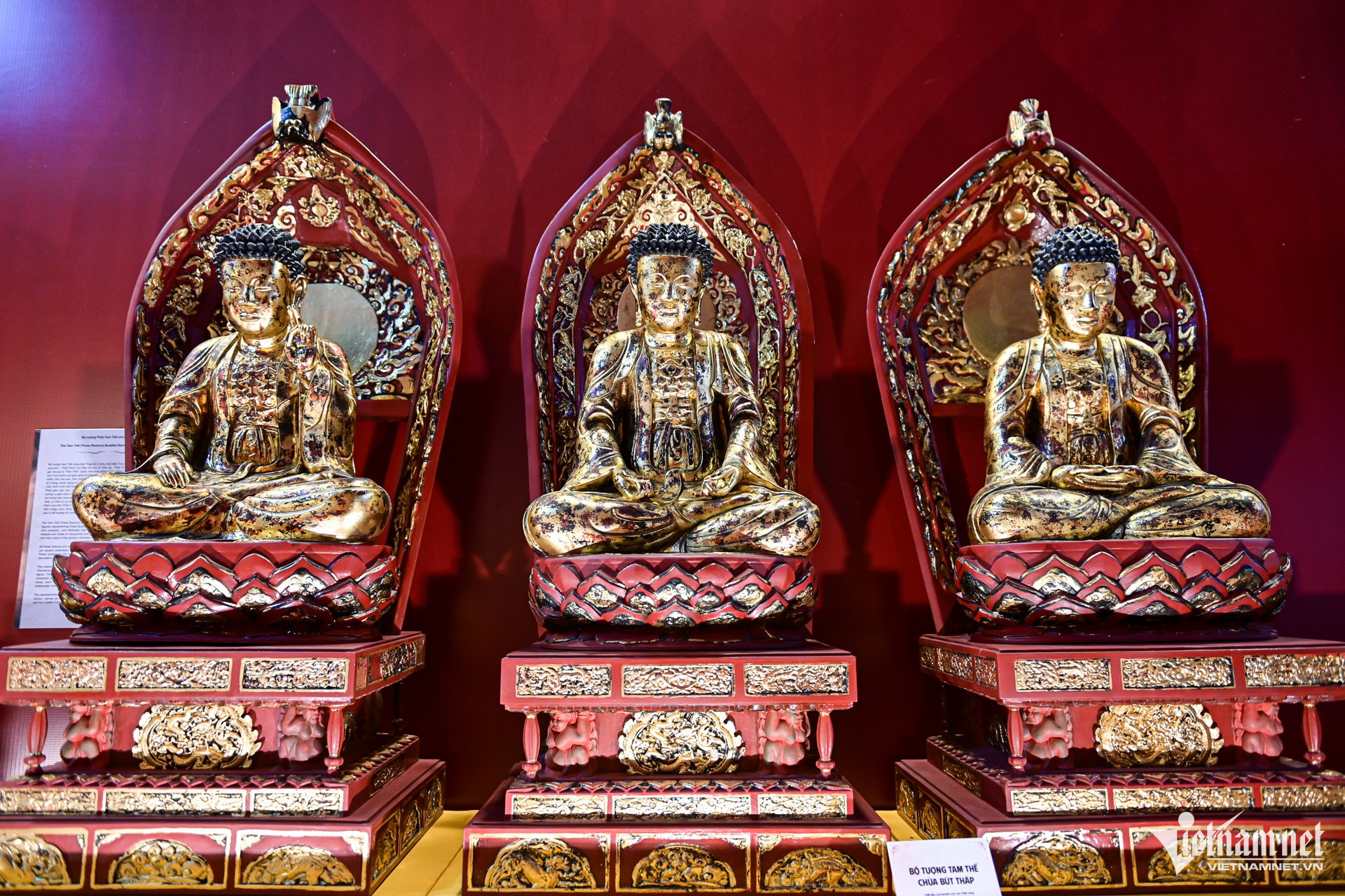
Replica of the Three Worlds Buddha statues at But Thap Pagoda (Bac Ninh).
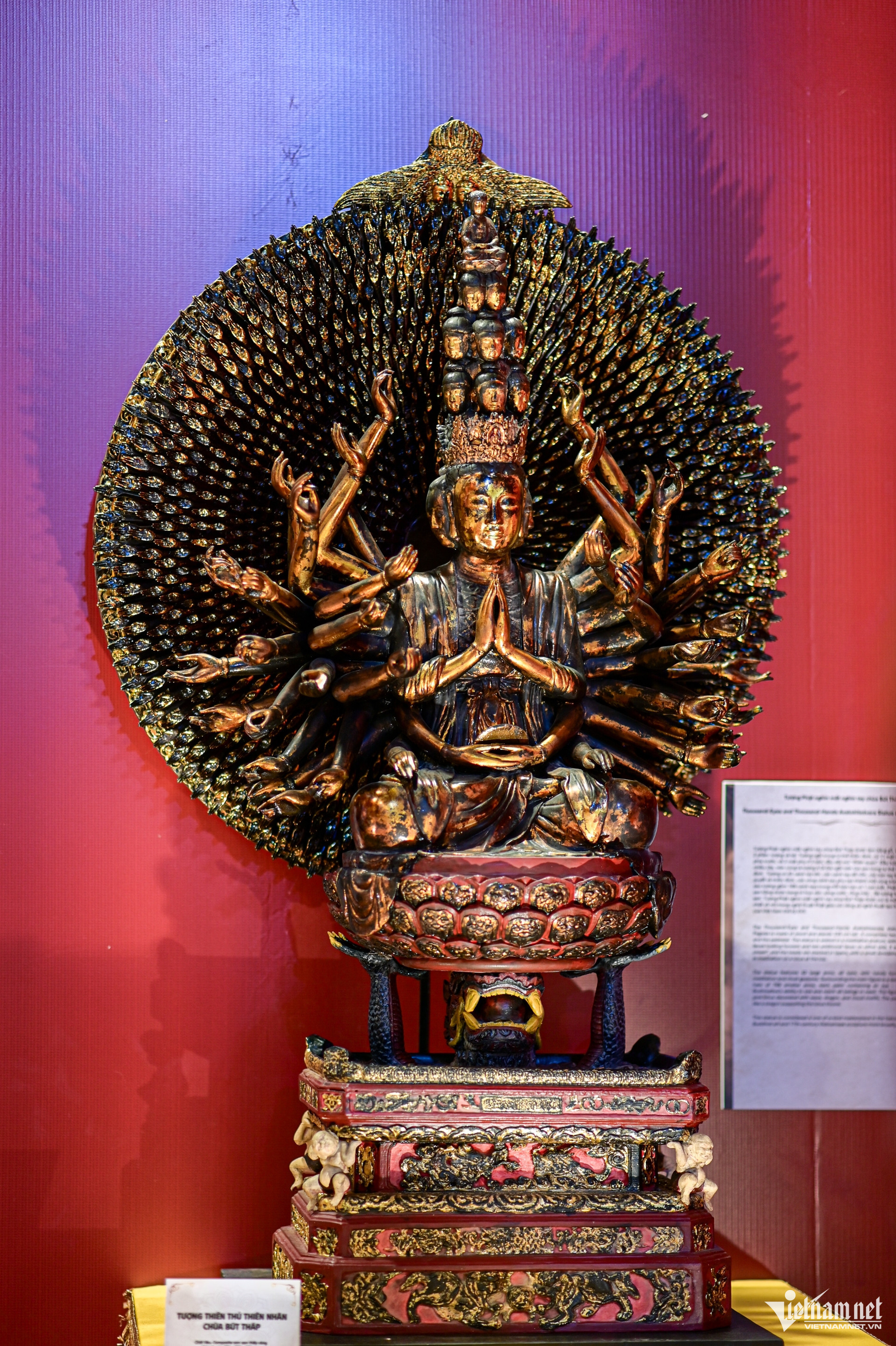
Replica of the Thousand-armed Avalokiteshvara statue at But Thap Pagoda (Bac Ninh).
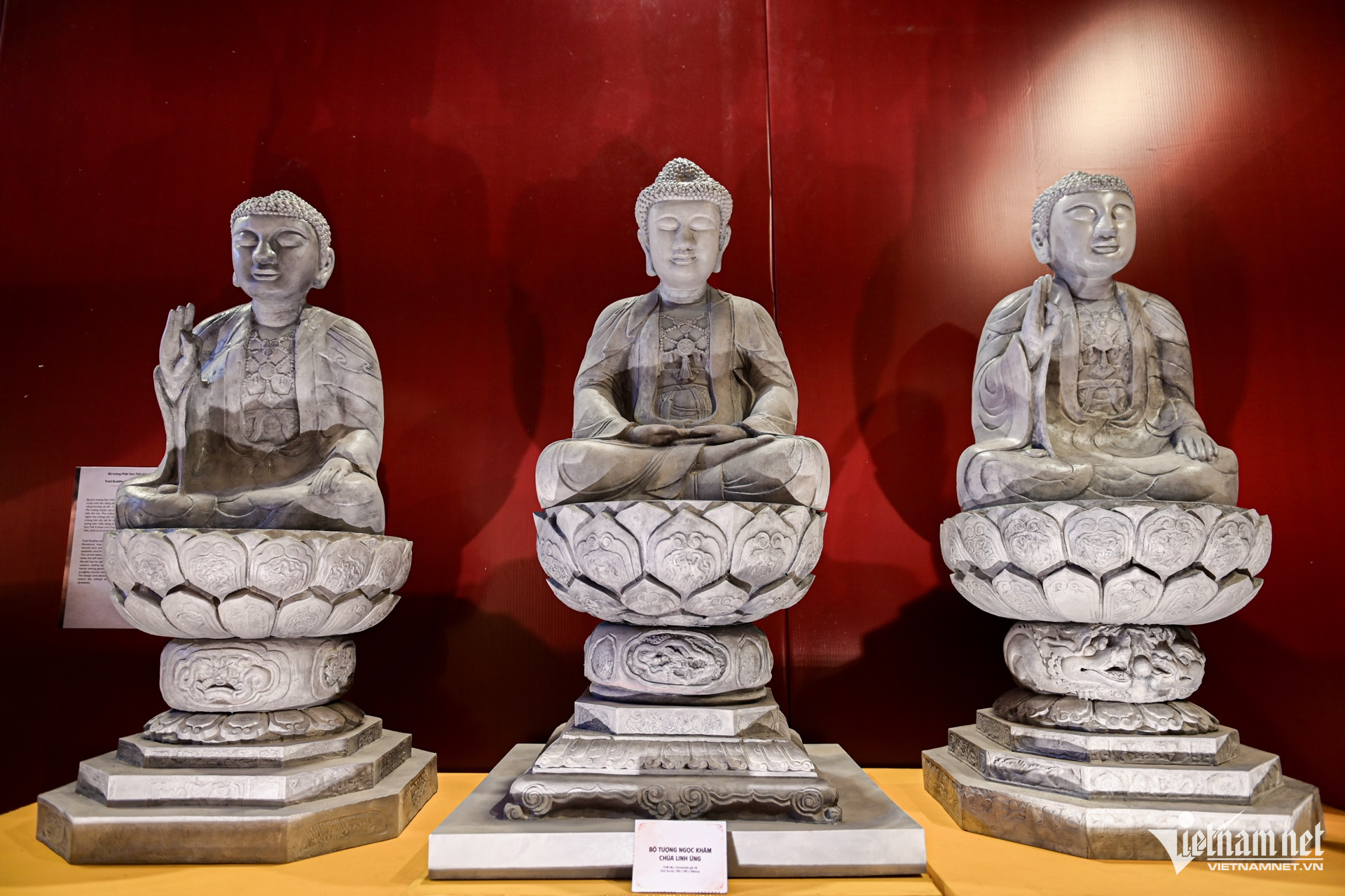
Replica of the Three Worlds Buddha statues at Linh Ung Pagoda (Bac Ninh).
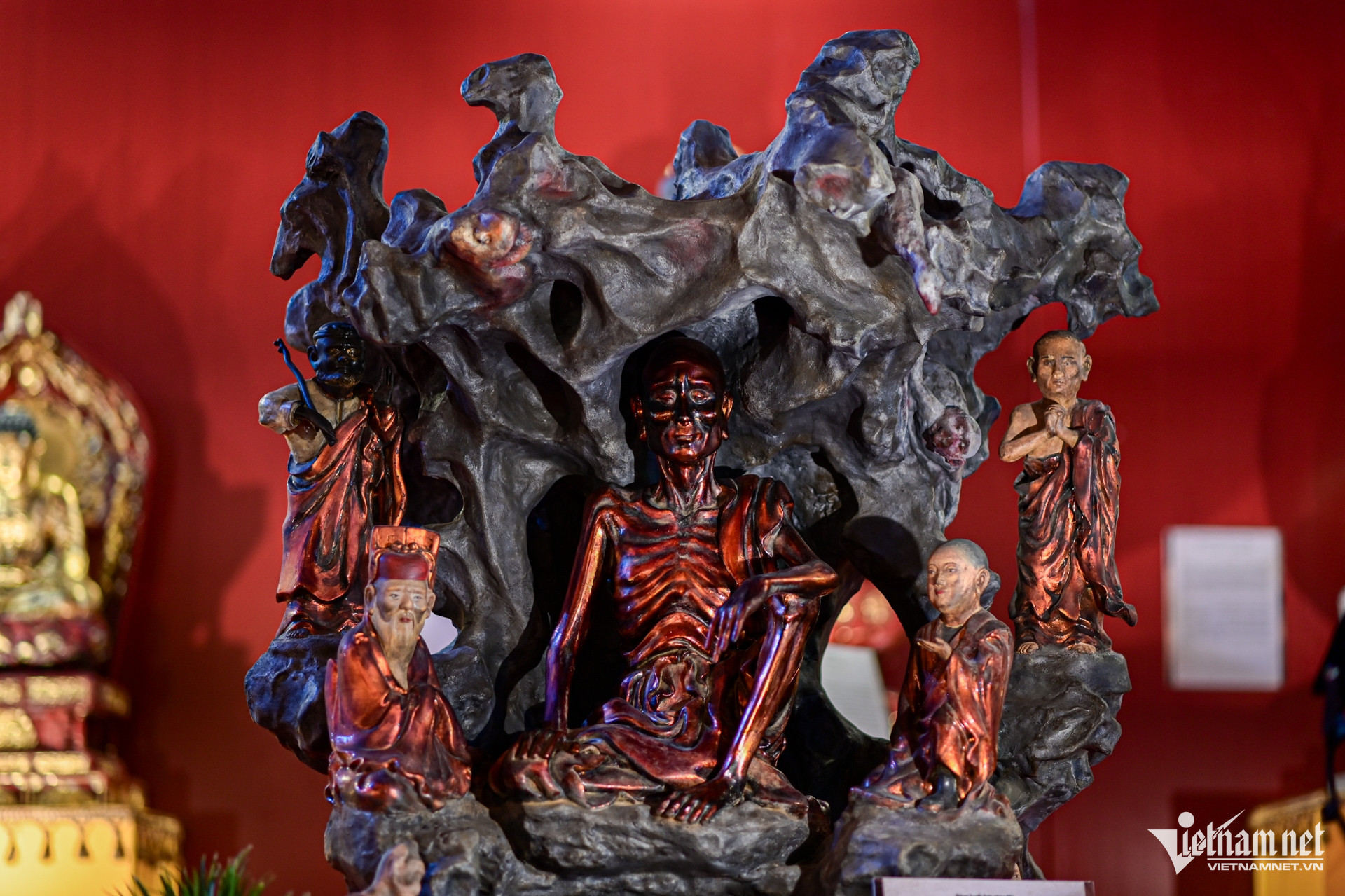
Replica of the Tuyet Son statue at Mia Pagoda (Hanoi).

Replica of the Thousand-armed Avalokiteshvara statue at Me So Pagoda (Hung Yen).
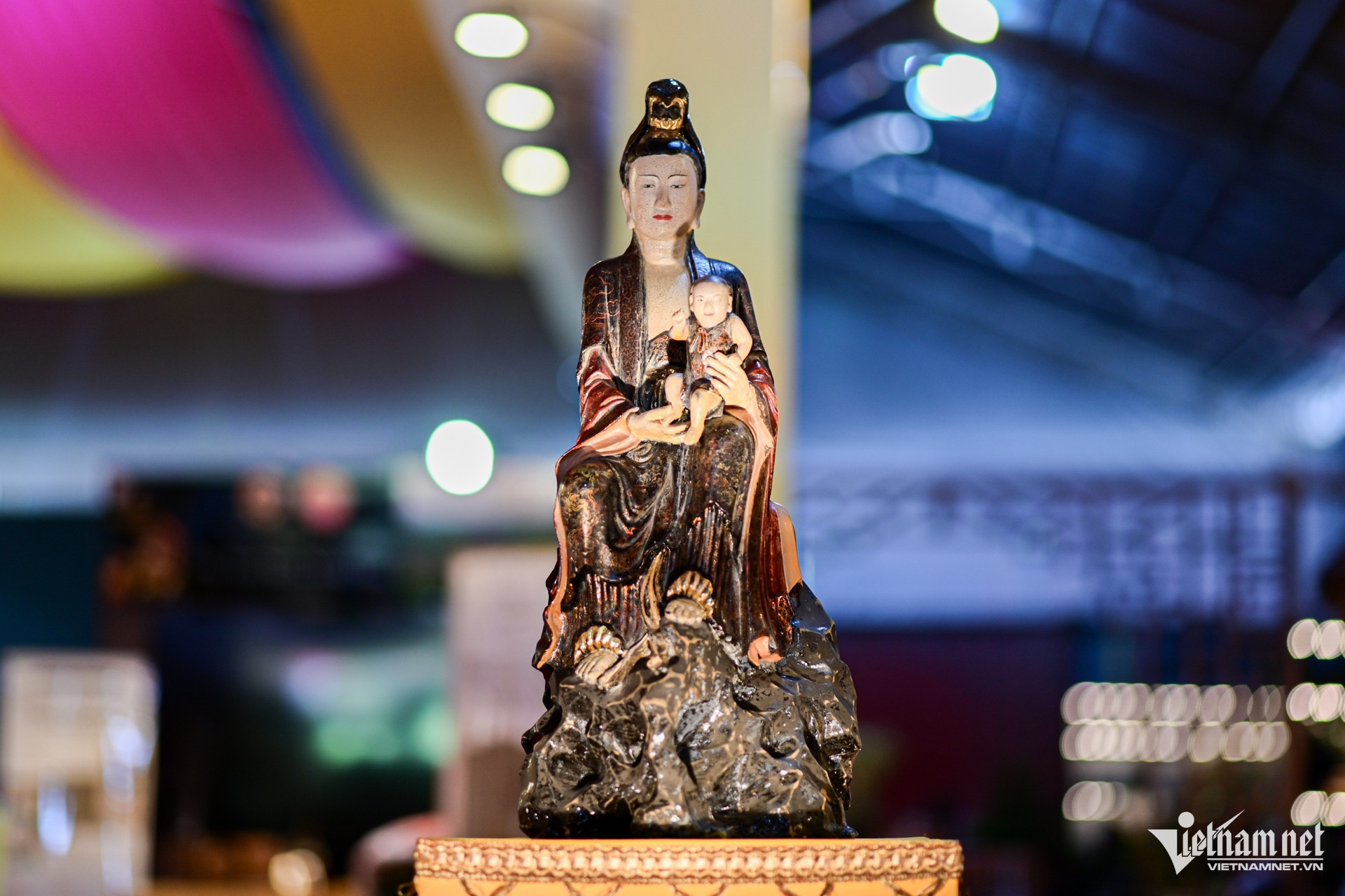
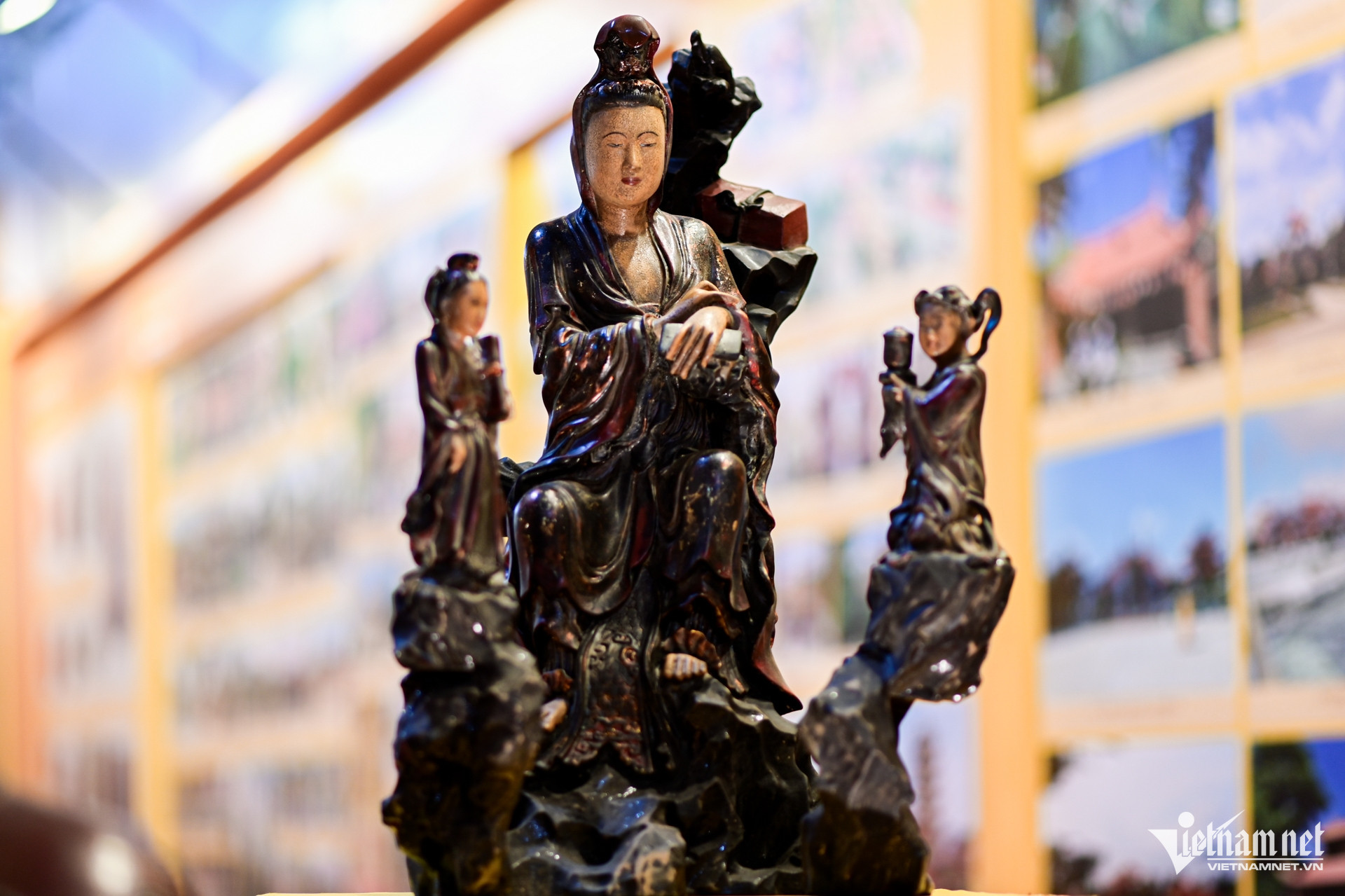
Replicas of Avalokiteshvara bestowing children and Avalokiteshvara seated on a mountain at Mia Pagoda (Hanoi).
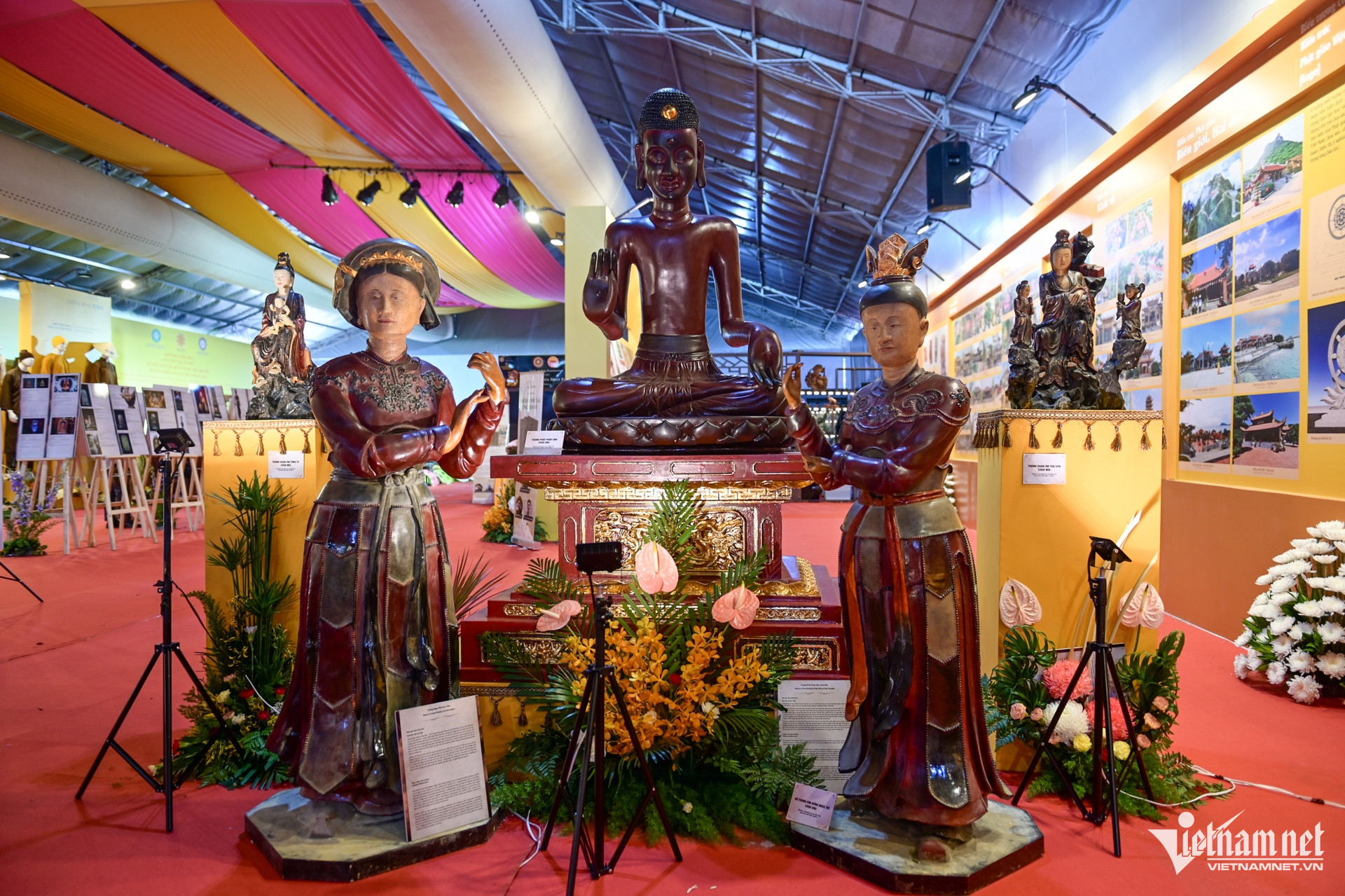
Replica of the Phap Van Buddha statue at Dau Pagoda (Bac Ninh), flanked by Kim Dong and Ngoc Nu statues.

The “Northern Buddhist Heritage” exhibit captures 2,000 years of spiritual and cultural tradition, featuring a Ly dynasty terracotta stupa from the 16th or 17th century.
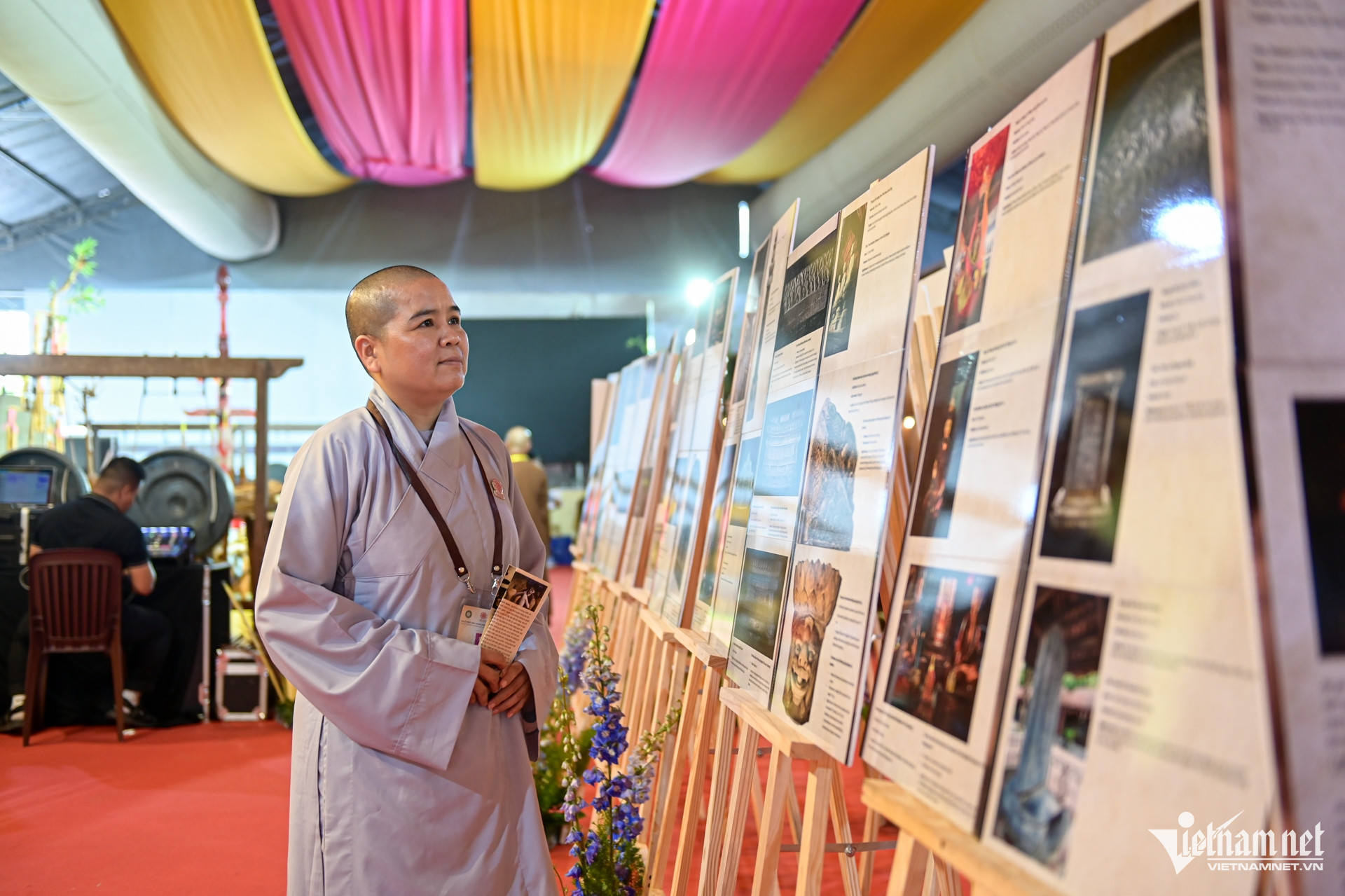
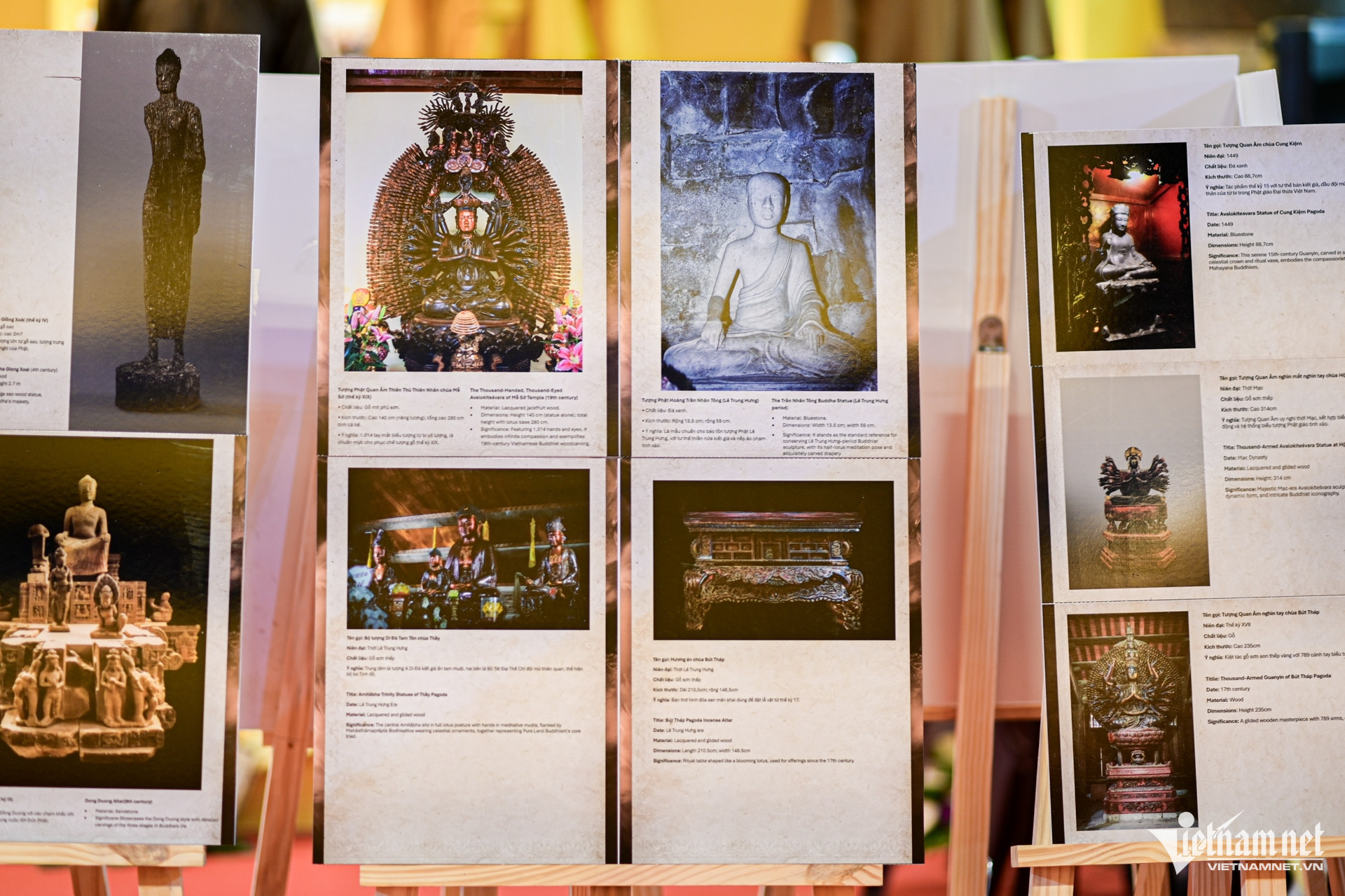
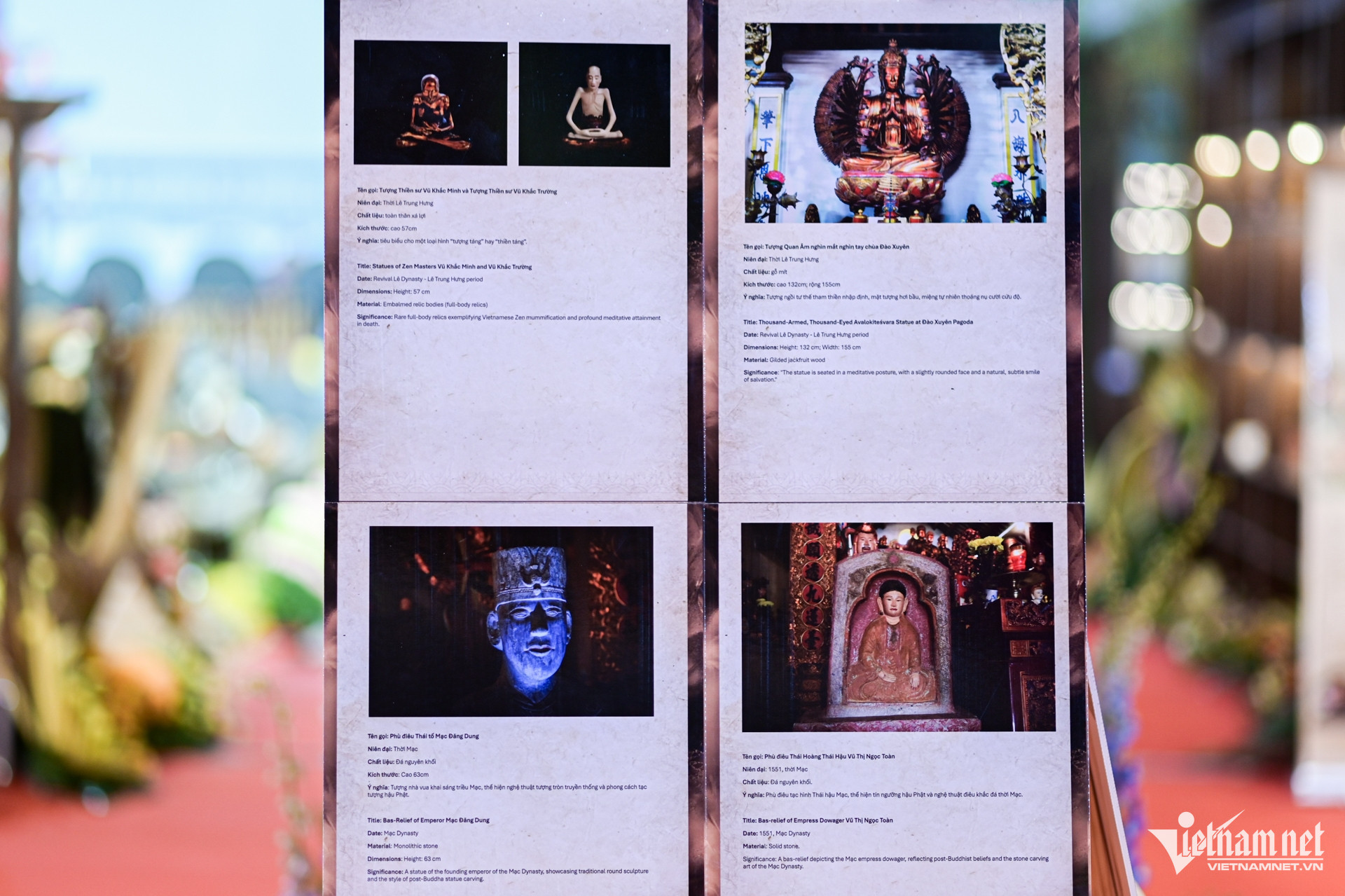
Nguyen Hue